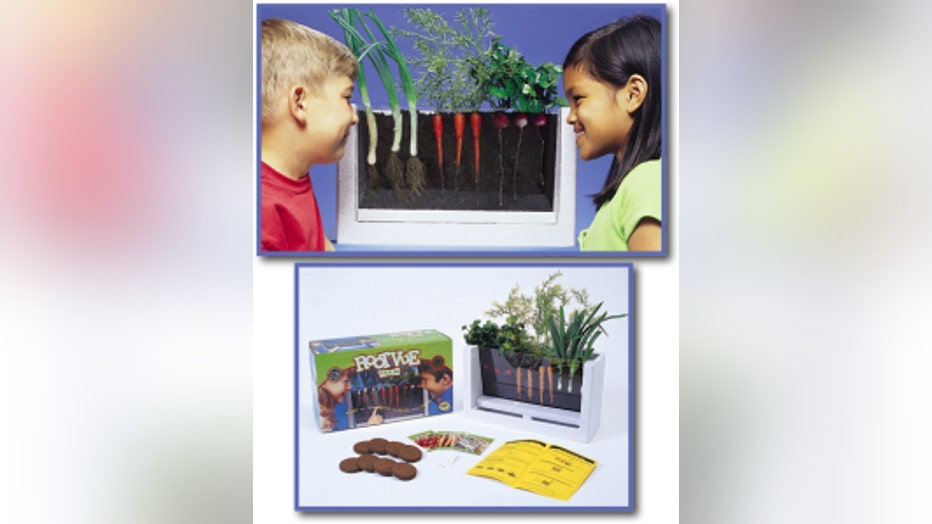Gardening with Tim: Starting from seeds
SEATTLE -- Even though May is well under way, it's not too late to plant those seeds to start you garden. It can also be a great experience for the kids, as well. You can save pennies on the dollar if you start plants from seeds. However, it will cost you in terms of time and patience.

Since most sprouting seeds look similar-- labeling your veggie starts helps you know what is what. Photo courtesy of the great non-profit Seattle Tilth. (http://www.seattletilth.org)
People have been sowing seeds for almost as long as there has been dirt, it seems. But, with certain modern gadgets like mini ready-to-go greenhouses make it easier than our ancestors had it.
"It's specially formulated," says Allen Larsen with Fred Meyer's garden center about the peat based "pods" that go into the growing cells of the tiny countertop greenhouse with clear plastic lid. You insert seeds into the pods according to the instructions and then water. "Set it into a window. You continue to water and follow the instructions. And that's where you start to see those seedlings really take off." He says they're hard to keep in stock at his Fred Meyer store in Seattle's Ballard neighborhood. When the temperature spikes with recent sunny days-- he says sales at their garden center are more than some entire stores at the Northwest-based retail chain. He says they continue to sell well during the spring and even early summer.
A google search would show there are supposedly easy "do it yourself" kits for growing nearly any kind of item you want to try to dig into this season. But, you can make a home version of a seed starting kit. Using recycled paper tubes from wrapping paper, toilet paper or paper towels makes it nearly free. Cut the tubes into about two inch sections and you can fold one end to hold the seed starting mix a bit better. Covered or uncovered, the growing "pods" or "cells" as they're often called end up in the ground and decompose-- while the plants take off.
Whatever method you choose to get your seeds started-- make sure to label them. No matter how much you think you'll remember what you planted-- the germination process takes awhile. Even then, the seedlings all look alike-- no matter what vegetable they one day will become. So, is starting from seeds for you? Depends on your goals, says Larsen. "It's whether you have that time. Whether you have that patience and warm window to start these seeds germinating, starting their life out."

Root-View Farm showcases what's going on above and below the soil.
One perk of the seed germinating process is that it's a near sure-fire way to involve the kids-- which is why lots of school kids at one time or another plant beans or pumpkin seeds. There are planters like the Tru View Root Farm that shows kids what's going on above and below the soil and really engage kids about where their food is coming from. The narrow shape, much like an ant farm, allows for an easy fit into most living areas on any window sill.
"There is something to be said, though, for starting from seeds," says Larsen. He got his kids interested in gardening through having them germinate seeds in the kitchen when they were little. "It's cool," he says, "watching those seeds getting going and have life going in your kitchen window." One of the first difficult things you'll face is trimming back your successfully sprouted seeds. The goal is pretty much one healthy plant per growing "pod" or "cell". There is only so much space in the garden. So choosing which one looks the strongest is a game of odds and prediction that you'll get better with after trial and error. Allen says it's hard since the seedlings are like "babies". "When you've got all your pods planted and you realize that you have to thin them by a third. But, that's what nature intended."Unfortunately there’s really no good shortcuts when it comes to hardening your seedlings and getting them ready for living outdoors 24 hours a day. So, you want to have patience to do it right. Plus monitoring those weather forecasts—especially those morning lows in the early spring—to make sure your seedings get off to a good start. Frost can easily kill your young and tender plants, so sometimes they have to be protected if they're going to survive a sudden cold snap. Coverings can include something as simple to an overturned plant pot to more elaborate tarping. Good luck and happy gardening!

